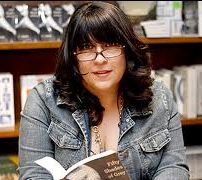Now I should start this piece by encouraging those of a delicate disposition to look away now or in true Jane Austin style, I suggest you avert your gaze. Joking aside, the book ‘50 Shades of Grey’ seems to have generated such a level of opprobrium that it’s a wonder it doesn’t come with a morality health warning.
With passages involving sado-masochism, bondage, flagellation and a female lead being coerced into a submissive to a sexually dominant male forming the major part in the book, it is clear why so much has been said about it.
The book’s success has been as much of shot in the publishing world’s arm as the Harry Potter series; and yes there’s rumour mill talk of it being turned into a film. The level of interest in the possibility of a film is such that talk has turn to which acting couples would best depict the book’s couple – Justin Timberlake and his wife Jessica Biel being among the front runners.
Even without a successful film disseminating the book’s message its current level of reception has led some to discuss it as a watershed moment in women’s reading.
Such bold claims however should be tempered with the knowledge that the author, E.L. James, was as interested in clever marketing techniques as writing a best seller: she explained at a speaking appearance, “I used to read a lot of romantic fiction on the tube and they had these horrible covers of women with their clothes falling off. So I designed really discreet covers for the books so no one would ever know this was a very salacious novel.”
The success of 50 Shades begs the question, does this book really tell us something significant about the social development of women or does it just confirm that we are all susceptible to hype?
Newsweek’s Katie Roiphe is less than convinced that 50 Shades represents a watershed moment or is even, as its marketers claim, a liberationist text. In her article ’50 shades of grey mania, spanking goes mainstream’ Roiphe puts the book’s success down to it being not so much a radical text but the ramping up of familiar romantic fiction tropes:
“Most likely it’s the happy convergence of the superficial transgression with comfortable archetypes, the blushing virgin and the whips. To a certain, I guess, rather large, population, it has a semi-pornographic glamour, a dangerous frisson of boundary crossing, but at the same time is delivering reassuringly safe, old-fashioned romantic roles.”
Roiphe’s article also points to an aspect of the book that has concerned many others: the underlying message that women enjoy being dominated; an idea which appears to be reflected in the rise in popularity of books and websites that have similar themes.
 For her this message appears to be at odds with the strides that women have made: “It is intriguing that huge numbers of women are eagerly consuming myriad and disparate fantasies of submission at a moment when women are ascendant in the workplace, when they make up almost 60 percent of college students, when they are close to surpassing men as breadwinners, with four in 10 working women now out earning their husbands, when the majority of women under 30 are having and supporting children on their own, a moment when—in hard economic terms—women are less dependent or subjugated than before.”
For her this message appears to be at odds with the strides that women have made: “It is intriguing that huge numbers of women are eagerly consuming myriad and disparate fantasies of submission at a moment when women are ascendant in the workplace, when they make up almost 60 percent of college students, when they are close to surpassing men as breadwinners, with four in 10 working women now out earning their husbands, when the majority of women under 30 are having and supporting children on their own, a moment when—in hard economic terms—women are less dependent or subjugated than before.”
Where Roiphe is prepared to simply note an incongruity Claire Phillipson, Director of Wearside Women in Need, has a much different take: she feels that 50 shades is, “a validation of a dangerous view of women that excuses domestic violence.”
Back in August the news media were reporting that Wearside Women were asking to for copies of 50 Shades to be dropped off at their office so that they could hold a November 5thbook burning. In a recent interview with Claire she pointed out that her organisation didn’t definitely say that they would burn copies of the book; the idea was hotly debated however.
Phillipson is keenly aware that any group willing to burn books must see themselves as cultural arbiters but she’s happy to explore the issue of whether the message is different if book burning is done by those not known for being authoritarian.
For her the idea of burning books is obviously an intriguing one when its women, as she says, “people are threatened by women burning books.” What really interests Phillipson however is the idea that certain texts would never be part of our cultural memories if they were expunged from history; for her this should be the fate of 50 shades. When I asked her whether she thought that people should be allowed to make their own minds up on this one there was an emphatic “No.”
In discussing whether the book’s story is told from a female perspective Clare was happy to acknowledge that this was the case but while, “There’s a powerful female narrative but it is child like.” For her this is really troubling on a fundamental level: “I’d be concerned that grown women would like this view of women”
I’m happy to take on Phillipson’s firebrand response to 50 shades but would have to say I’m concerned about the amount of people who have a take on something that they’ve not read or seen; with a media so dedicated to disseminating what is deemed to be the popular text of the day it is such a Post-modern way of knowing a text.
For this reason above any other I would say fair enough, take account of competing views but you’ll have to do your own reading and viewing if you want your own opinion.






